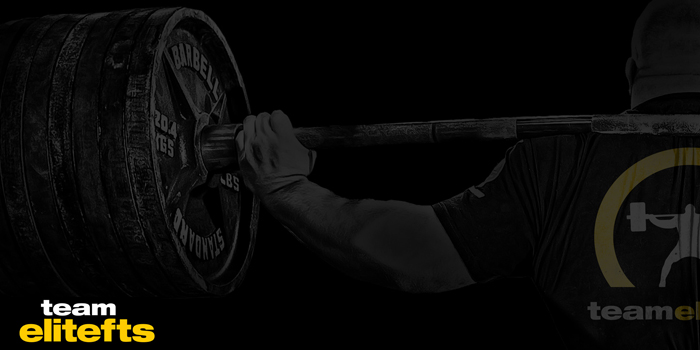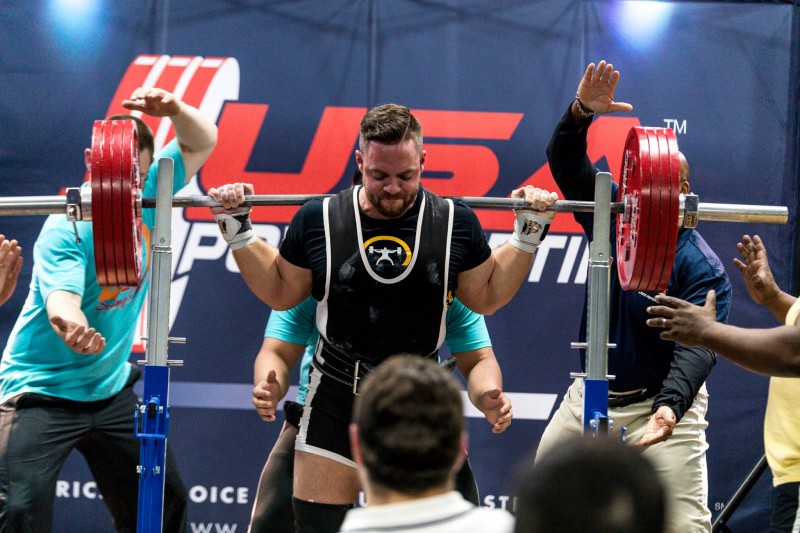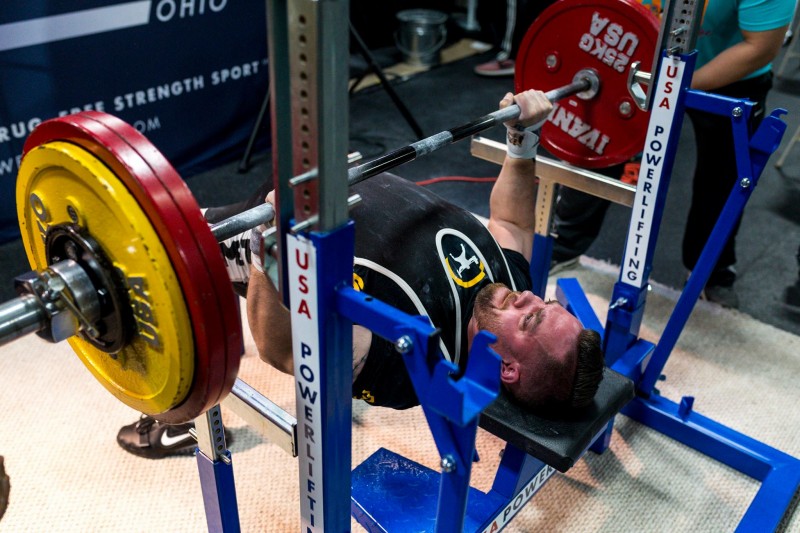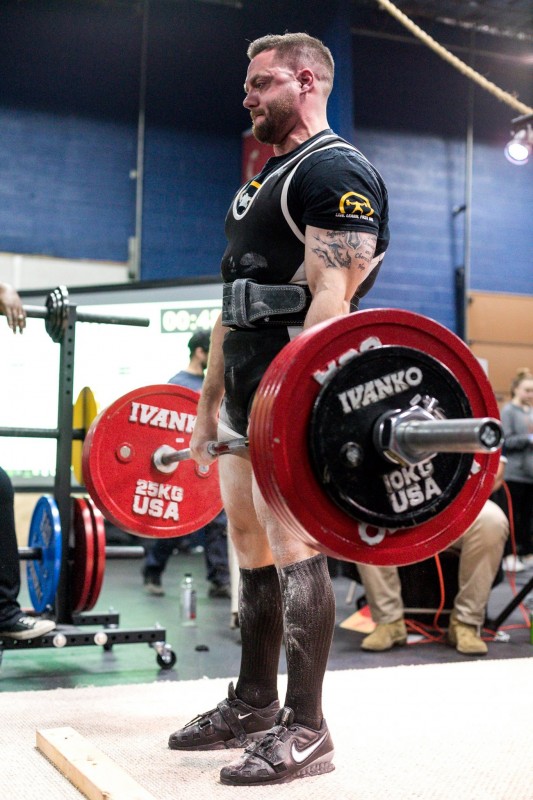
I recently competed raw at the USAPL Spring Classic held at CBUS Lifting Co in Columbus, Ohio. It has been a transitional year for me with competing. If you rewind almost exactly a year from now, I was competing equipped on the elite day at XPC Finals in the Arnold Classic. It was after that meet I decided to take full control of my own programming and take a slightly different approach to some of how I train. In doing that, I wanted to strip away all the additional variables outside of raw strength so I could evaluate different aspects of my programming and then build up from there. I also wanted to prove to myself that I could go from competing equipped to qualifying for USAPL Raw Nationals, then build back up to compete at an even higher level equipped than before (XPC Pro Day). Much of this has also been an opportunity for me to hone my problem-solving skills as a coach, and test my training approach and philosophy against different competition variables.
Meet Report: CETC US Open 2017 — Second Place with a 2121 Total at 220
My next article will cover some of the similarities and differences in how I train for raw and equipped competition, and I think will be helpful for those who have been asking about how my transition went from multi-ply gear to raw with knee sleeves (AKA Raw Classic, or whatever it’s called these days). I think it’s common for most people to defend their own training methods by attacking people who compete in the opposite field (whether it be equipped or raw), and instead, I wanted to compete on both ends and learn how I can compete and coach in each arena the best way possible. I will cover more of what I’ve discovered this year in my next article, but for now, I want to recap some of the things I learned from this meet specifically.
Goals for the Meet
My primary goal for this meet was to qualify for USAPL Raw Nationals. The total was very doable based on my strength levels, but because the competition would be with IPF rules, I knew I would be adjusting to some new variables that I haven’t competed with for the past four to five years. Some of these were:
- No knee wraps for squats
- Stricter depth for squats (USAPL is known for judging for convincing depth below parallel)
- Feet flat for bench (as opposed to allowing a setup with feet tucked)
- Stiff bar (versus deadlift bar) for deadlifts
- Two-hour weigh in and IPF weight classes (231-pound class versus 220-pound class)
These were all very doable things to adjust to, but I didn’t want to underestimate anything. My training adjusted accordingly (which I’ll cover more in my next article), and although my bodyweight was only 215 pounds on meet day, I decided not to cut to 205 pounds because of the short weigh-in and not wanting to add extra variables to my first meet back in this environment.
The biggest challenge out of all these variables for me all had to do with my hip. With my torn labrums, cartilage damage, cam deformities, and other issues (my hips are pretty bad), squatting any lower than necessary can be a challenge for me (especially without any support from knee wraps or briefs). It also makes using a flat foot bench setup really difficult, and leaves my hips pretty shot for deadlifts. Because of this, I didn’t want to take anything for granted with my lifts on meet day, and made sure I thought out my strategy beforehand.
Meet Day
I was struck right away by how well organized and professional the meet was for being a small local competition. Maggie Kuhn and her staff at CBUS Lifting Co did an excellent job at providing a very lifter-centered and high quality meet experience. It was also exciting to see so many new competitors taking the platform (I want to say probably 80% of the lifters were first-time competitors in the afternoon session).
I knew the numbers I needed to shoot for to realistically get the total I needed, which was about a 501-pound squat, 352-pound bench, and 590-pound deadlift. I felt good about getting all of the lifts but wanted to set myself up in a position where I could adjust in case I missed a lift for a technical reason. So I opened light but close enough that I could jump to each of those numbers on a second attempt without going past a 10-percent jump (which is my general rule). That way if my openers felt good I could jump to my goal attempt and still have a third attempt if something went wrong.
My squat opener (457 pounds) was easy. I jumped to 501 pounds for my second and got that smoothly as well. I decided to take a small jump to 518 pounds for my third attempt to pad the total. I got it easily but got two red lights for depth. It was borderline, but knowing the expectations for this meet with depth I should’ve sunk it a little lower. It’s good to know that at least I have the strength for it for next time.
I went onto bench, opened easily with 319 pounds, and jumped to 352 for my second. I was able to get it but pressed out of my groove (straight up instead of back) and it was a grinder. My hip and back felt it, so I decided to pass on my third to conserve energy for deadlift. The meet was moving very fast (started at 2 PM and ended by 6:30 PM), so I knew a little extra rest for my hip would be a smart move.
I opened with 540 pounds for deadlift and got it easily. I jumped to 589 pounds for my second (which would get me my goal total) and got it smoothly. Normally deadlift is my bread and butter, but with the meet moving quickly and using a stiff bar, I didn’t want to take any chances. Since I got my goal total, I took a small jump to 601 pounds for my third and was able to grind it out. Lockout continues to be my toughest part of the deadlift because of my hip, but wearing my Olympic shoes allows me to grind through lifts because of the improved hip angle.
Overall I finished with a 1455-pound total to hit my goal for the day and finished strong with an over 600-pound pull. I still have a long way to go, but in my first USAPL meet I remember being excited to pull 450 pounds and thinking going over 600 pounds was “insane.”
First-Time Lifters and Being Reminded About the Excitement of Competing
One thing I didn’t think about going into the meet, but that ended up being a really cool aspect of the weekend, was the number of first-time competitors lifting. Seeing lifters asking questions during the rules meeting and nervously working through their warm-ups made me remember how it felt to be a first-time competitor at a local meet. I tried to take as many opportunities as I could (without obviously throwing off my own lifting) to help all of them and answer any questions and give tips when I could. Seeing their excitement about hitting a PR on the platform and seeing them cheer selflessly for each other was an awesome experience. I highly recommend to veteran lifters to really be mindful of the tone you set around first-time lifters because how you impact them at their first meet will set the tone for how they treat others moving forward. They will always remember that first meet and if the veteran lifters were an encouragement or elitist assholes. I was happy to say the environment at this meet was great, and all the lifters left excited to hit training and compete again.
Plan Moving Forward
The past few months I was working on filling out the 231-pound weight class for this meet, and admittedly was eating a lot of crap. I’ve noticed more and more over time that I think I have some pretty bad sensitivities to having too much dairy and a lot of sugar (I know, what a revelation), and was getting pretty tired of being a digestive mess constantly. I’ve competed in the 242, 220, and 198-pound weight classes, with the majority of my meets being at 220 pounds. In the past, I’ve worked purely off macro/calorie manipulation with a lot of success changing my bodyweight, but moving forward I want to try removing certain processed things from my diet and see how it affects my digestive health. So my plan for the next several months is to approach my nutrition differently and see where my bodyweight goes. Then I'll decide what time frame would be the best to cut down to 198 pounds (or 205 pounds for two-hour weigh-ins). I don’t suspect it should be difficult (my natural body weight tends to want to be around 210 pounds), and I look forward to eating more whole foods.
Depending on how that goes the next several weeks, I’m going to decide on whether I want to compete in another USAPL meet in late summer, or compete in an RPS raw meet to qualify for raw XPC Finals. Part of me would like to continue improving with the IPF rules, but my hip is always something I have to keep in consideration, and this training is a lot harder on it. I’m going to work on game-planning the rest of my competitive year, pray through my decisions, and get things mapped out in the next few weeks. I also have some equipped goals (as I mentioned at the beginning of the article) that I will likely take on next year.
Whatever meets I choose to compete in throughout the year, I feel good that I’m getting stronger and getting smarter as a coach. I’m not the most genetically gifted lifter in the world, but I’m continuously getting stronger and improving my technical skill. I'm also improving my problem-solving skills, which allow me to be a better educator for other lifters.
Thanks again to Maggie and her staff/volunteers for putting on an excellent meet, and for my elitefts teammates for their constant help and support in my growth as a lifter. Congrats to all the first-time lifters and competitors from this weekend, and remember to always Live, Learn, and Pass On as you move forward in your competitive careers.
Photos courtesy of FlashFit Photography














2 Comments